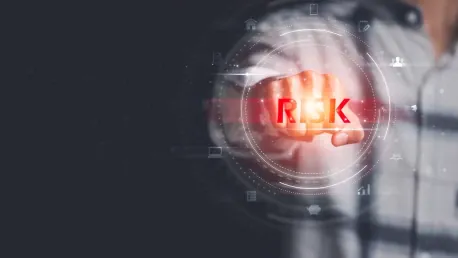In recent years, international humanitarian organizations have increasingly adopted risk management strategies to navigate the complex and often volatile environments in which they operate. This shift is particularly evident within the United Nations High Commissioner for Refugees (UNHCR), where Enterprise Risk Management (ERM) frameworks and their subsets, such as Security Risk Management (SRM), have become central to operational decision-making. These frameworks are reshaping how these organizations function, moving them away from strict legal mandates towards a more risk-centric model.
Introduction of ERM in International Organizations
Enterprise Risk Management (ERM) is a comprehensive approach that identifies, assesses, and manages various risks, including financial, operational, and political. This framework helps organizations determine their risk appetite and create strategic operational spaces. Since 2006, ERM frameworks have been increasingly adopted across the United Nations network and other international entities like the World Trade Organization (WTO) and the Internet Corporation for Assigned Names and Numbers (ICANN). This trend highlights a growing emphasis on risk management as a core component of operational decision-making.
The adoption of ERM frameworks allows international organizations to be more flexible, agile, and less constrained by legal mandates. By prioritizing risk assessments, these organizations can expand their activities beyond their traditional boundaries. For example, the World Bank’s shift towards a risk-based framework under reforms by General Counsel Leroy enabled the organization to undertake broader actions beyond its legal mandate, emphasizing operational agility.
By actively recognizing and addressing a spectrum of risks, international organizations are better positioned to adapt to an ever-changing global landscape. This proactive stance on risk management fosters a culture of continuous improvement, where organizations constantly refine their approaches to risk and develop more resilient operations. This paradigm shift reflects a comprehensive understanding that risk is not merely to be mitigated but strategically managed to unlock potential growth and innovation opportunities.
Expansive Nature of ERM
ERM frameworks, particularly those driven by financial and operational risk considerations, enable international organizations to adopt more flexible and dynamic operational spaces. This approach allows organizations to balance risks across various domains, leading to potentially expansive actions. The World Bank’s experience illustrates how ERM can facilitate identifying strategic operational spaces based on calculated risks, allowing for more dynamic and risk-tolerant operations.
However, this shift towards a risk-centric model can also lead to a departure from strict legal mandates. By focusing on risk assessments, organizations may prioritize operational flexibility over adherence to their legal boundaries. This trend underscores the evolving nature of international organizations’ decision-making processes, driven by the need to stay responsive and agile in the face of dynamic risks.
As organizations evolve to incorporate ERM frameworks, there is a notable increase in operational latitude. This expanded reach is beneficial in navigating unpredictable environments where traditional legal mandates may limit effective responses. Organizations thus move towards a governance model that balances regulations with the need for adaptability.
Security Risk Management (SRM) in Humanitarian Organizations
Humanitarian organizations, due to their operational contexts, place a significant emphasis on Security Risk Management (SRM) to manage physical risks and ensure staff safety. SRM focuses on delineating governance spaces where it is safe and tolerable for these organizations to operate amid security threats. This emphasis often leads to risk aversion rather than risk-taking, contracting the organization’s operational scope compared to its legal mandate.
In organizations like the UNHCR, where security and political risks dominate operational decision-making, SRM frameworks are deeply embedded into their operations. These frameworks utilize systematic approaches to assess and manage risks, with a significant focus on security threats. This focus is evident in UNHCR’s ERM framework, where security threats feature prominently in their risk assessments and reviews.
This prioritization of security underscores the need for humanitarian organizations to protect their personnel and ensure the continuity of their vital operations. SRM frameworks provide a structured approach to evaluate and mitigate threats, offering a clear directive for safe operational limits. However, this risk-averse stance may curtail the scope of work these organizations can undertake, often aligning their actions more closely with pragmatic safety considerations rather than their overarching mission goals.
Impact of SRM on Humanitarian Operations
The centrality of SRM in humanitarian organizations leads to a deeply ingrained culture of risk aversion, influencing operational behaviors and decisions. This risk-averse culture can result in operational limitations, with organizations opting for conservative measures to mitigate security threats. As a result, the operational scope of these organizations may become narrower than their legal mandates, prioritizing political stability and staff safety over broader mission objectives.
UNHCR’s operations in Egypt and Mauritania provide clear examples of how SRM advocacy can restrict action. In these cases, the need to manage government relations and ensure staff safety led to more conservative operational decisions. These examples highlight the tension between risk management imperatives and the organization’s legal mandates, demonstrating the practical applications of SRM in humanitarian contexts.
Furthermore, the prioritization of SRM frameworks might inadvertently reduce the capacity of organizations to respond flexibly to emergent crises. While ensuring safety is paramount, the cautious approach may sometimes conflict with the urgent needs of affected populations. Balancing risk management with the imperative to deliver humanitarian assistance remains a complex challenge requiring continually refined strategies.
Operational Flexibility through ERM
The inclusion of ERM in international organizations’ strategies shifts their operational paradigms by systematically recognizing and addressing diverse risk categories. This holistic risk management conceptualization encourages organizations to balance risks across financial, operational, and political domains, thereby evolving their decision-making processes.
ERM frameworks facilitate identifying strategic operational spaces based on calculated risks, enabling organizations like the World Bank to expand activities dynamically. These frameworks underline the move from a bounded legal mandate toward more adaptive and expansive roles dictated by risk assessments.
The flexibility afforded by ERM is instrumental in transforming how organizations allocate resources and prioritize initiatives. By fostering a risk-aware culture, ERM frameworks help organizations seize opportunities while meticulously navigating potential pitfalls. This agility is crucial in the modern, interconnected global environment, where rapid response capabilities significantly enhance organizational effectiveness.
Implications on Organizational Culture and Mandates
The centrality of SRM in humanitarian organizations leads to a deeply ingrained culture of risk aversion, which influences operational behaviors and decisions. This risk-averse culture can result in operational limitations, with organizations opting for conservative measures to mitigate security threats, sometimes prioritizing political stability and staff safety over broader mission mandates.
This shift towards a risk-centric governance model has significant implications for humanitarian lawyering and decision-making. The reliance on ERM and SRM frameworks reflects an alternative approach to lawmaking and decision-making in international organizations, where risk-based governance potentially redefines traditional legal roles and operational limits.
This realignment necessitates a keen understanding of how to balance risk management with mission objectives. Bridging these priorities requires an adaptive legal and operational framework that accommodates the complexities of modern humanitarian work. Continued exploration of ERM and SRM’s implications on legal mandates will be essential in refining governance models to better address emergent humanitarian challenges.
Case Studies Demonstrating SRM Influence
UNHCR’s operations in Egypt and Mauritania serve as poignant examples of the practical influence SRM has on organizational decisions. In these specific contexts, SRM advocacy has led to more restrictive operational choices aimed at managing government relations and ensuring staff safety. These case studies highlight the delicate balance organizations must strike between adhering to legal mandates and responding prudently to security threats.
In Egypt, SRM policies might have influenced UNHCR to operate within particular parameters, ensuring their efforts do not compromise relationships with local authorities. Similarly, in Mauritania, the focus on SRM could guide UNHCR to prioritize staff security over potentially broader but riskier initiatives. Such cases underscore the practical applications of SRM, providing valuable insights into how risk management frameworks shape humanitarian operations.
The influence of SRM extends beyond immediate operational boundaries, affecting strategic planning and long-term mission outcomes. By embedding risk management at the core of their operational ethos, organizations like UNHCR are better able to navigate the complex, often hazardous environments in which they operate. Nevertheless, the challenge remains in aligning these risk aversions with the commitment to deliver comprehensive humanitarian aid.
Conclusion
In recent years, international humanitarian organizations have increasingly embraced risk management strategies to better navigate the complex and often volatile environments they operate in. This approach is particularly noticeable within the United Nations High Commissioner for Refugees (UNHCR), where Enterprise Risk Management (ERM) frameworks, along with their subsets like Security Risk Management (SRM), have become essential to operational decision-making. These frameworks are transforming the way these organizations function, shifting them away from strict legal mandates to a more risk-centered model.
The adoption of ERM and SRM frameworks entails identifying, assessing, and mitigating risks that could impact the success and safety of humanitarian operations. These strategies ensure that humanitarian efforts remain effective even amidst political instability, security threats, and other unpredictable challenges. For instance, ERM involves comprehensive analysis and preparation strategies that encompass financial, operational, and strategic planning to minimize risks. Meanwhile, SRM focuses specifically on ensuring the safety and security of both staff members and vulnerable populations served by these organizations.
By prioritizing risk management, humanitarian organizations like UNHCR can proactively address potential issues before they escalate, thereby enhancing their operational resilience and effectiveness. This evolution in strategy not only helps in safeguarding resources and lives but also in achieving long-term goals despite uncertainties.









